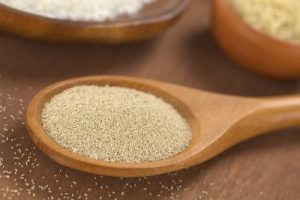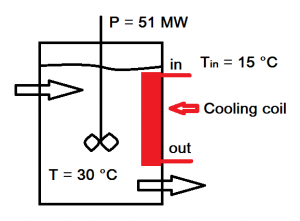7.2 Theory and practice, medium: exercises (examples)
Course subject(s)
7. Transport phenomena in the world around us
A large-scale bioreactor is used in the production of bakers’ yeast. The reactor is a bubble column, with cylindrical shape, liquid height 15 m, and diameter 5 m. The column is gassed with air, to provide oxygen transfer to the cells and removal of the CO2 produced, and for liquid mixing.

The gas volume fraction is equal to ϵG = 0.3 and the biomass volume fraction is ϵX=0.3 (equivalent to a dry matter content of 100 g/l). The bubbles have a diameter of 5 mm and the cells a diameter of 5 µm.
Exercise 2
Consider the industrial fermenter of the theory video, with a heat production of 51 MW. Suppose you need to keep the fermenter at 30 °C , because that is the temperature at which the micro-organisms work the most efficient. So, you need to cool the fermenter and you do this with a heat exchanger.

The heat exchanger uses inflowing water of 15 °C.

The Basics of transport phenomena by TU Delft OpenCourseWare is licensed under a Creative Commons Attribution-NonCommercial-ShareAlike 4.0 International License.
Based on a work at https://ocw.tudelft.nl/courses/basics-transport-phenomena/.



